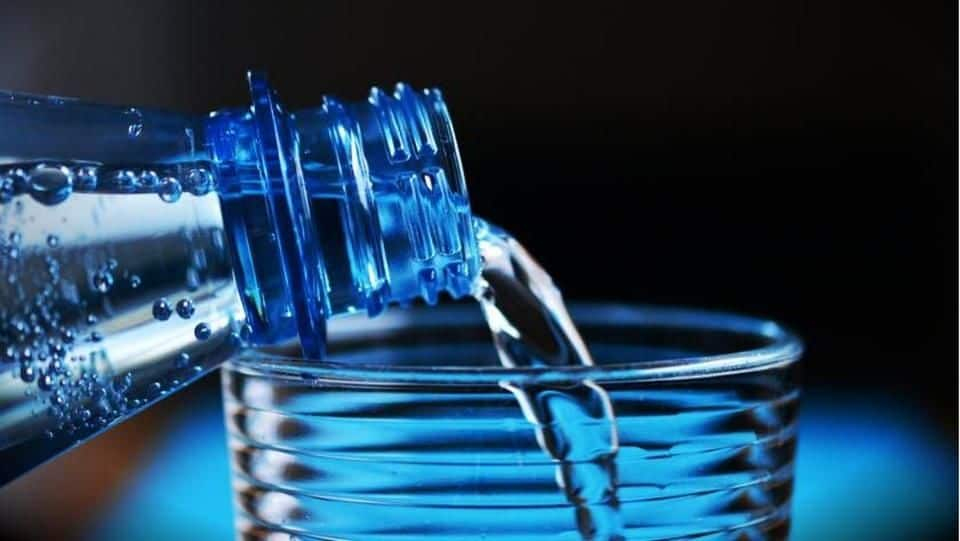
These 11 cities, including Bengaluru, to run out of drinking-water
What's the story
Cape Town is set to run out of drinking water on 11th May.
The plight of the drought-stricken South African city isn't something which comes as a surprise considering various warnings about water scarcity given by experts over the years.
Yet, Cape Town's march towards "Day Zero" is just the tip of the iceberg, with several other major cities facing the same threat.
Here's more about them.
Do you know?
World is facing a dire time in terms of water
Despite 70% of the Earth's surface being covered by water, only 3% of it is freshwater. To make matters worse, UN projections predict that by 2030, global demand for freshwater will exceed supply by 40% due to climate change, human action, and population growth.
1. Sao Paulo
Sao Paulo's future water supply is in serious doubt
In 2015, Brazil's financial capital Sao Paulo faced a similar situation as Cape Town when the city's main reservoir fell below 4% capacity.
After the water crisis was deemed "finished" in 2016, in January 2017 the main reserves again fell short of the expected levels by 15%.
A UN mission to Sao Paulo also criticized "lack of planning and investment" by the state.
2. Bengaluru
India's tech hub, Bengaluru is facing a severe water crisis
Following Bengaluru's rise as one of India's major technological hubs, the city grew at breakneck speeds.
Local authorities are struggling to manage the city's antiquated water and sewage systems amid growth of new property developments.
On one hand, Bengaluru's dated plumbing system results in the loss of half of its drinking water.
On the other hand, not a single Bengaluru lake has drinkable water.
3. Beijing
Beijing's 20 million inhabitants face a difficult time ahead
In 2014, Beijing could only provide 145 cubic metres of freshwater per person annually to its 20 million inhabitants.
Official estimates hold that 40% of Beijing's surface water is unfit for even industrial use.
With 20% of the world's population, China has 7% of the world's freshwater supply.
Additionally, China's water reserves declined by 13% from 2000-2009 according to a Columbia University study.
4. Cairo
Once the cradle of civilization, Egypt now faces water scarcity
Despite its contribution to the growth of human civilization, River Nile is facing tough times of late.
The source of 97% of Egypt's water, River Nile is becoming increasingly polluted owing to the dumping of agricultural and industrial waste.
The World Health Organization reports that Egypt ranks high among lower-middle income countries in terms of water pollution-related deaths.
Critical shortages are expected by 2025.
5. Jakarta
Jakarta's lack of drinking water is slowly sinking the city
Jakarta, the capital of Indonesia, faces a two-pronged crisis - lack of drinking water and rising sea levels.
Less than half of Jakarta's 10 million inhabitants have access to piped water.
Consequently, the illegal digging of wells is rife and is leading to the drainage of underground aquifers, literally deflating the city.
As a result, 40% of Jakarta now lies below sea level.
6. Moscow
Moscow is still reeling from the Soviet era's industrial legacy
Despite having almost 25% of the world's freshwater supply, Russia is plagued by problems of water pollution resultant of the industrial legacy of the Soviet era.
Official regulatory bodies have admitted that 35-60% of Russia's drinking water reserves don't meet sanitary standards.
For Moscow, where the freshwater supply is 70% dependent on surface water, this is a rather worrying sign.
7. Istanbul
Istanbul is edging closer to a water crisis
Istanbul's reservoir levels had declined to 30% of total capacity in the beginning of 2014.
While Istanbul isn't as badly hit as the aforementioned cities, official figures show that the city is technically facing a water crisis soon as per capita freshwater supply had declined to 1,700 cubic metres in 2016.
Experts are of the opinion that Istanbul will face a crisis by 2030.
8. Mexico City
Mexico City already imports 40% of its water
For the 21 million inhabitants of Mexico City, water shortage is nothing new.
One in five in the Mexican capital get a few hours of tapwater for a week, while 20% has running water only for part of the day.
With over 40% of its water being imported from distant sources and no large-scale operations underway for recycling water, the city's facing dire times.
9. London
London to face severe shortages by 2040
While one wouldn't normally associate London with water crises, the reality is much different.
London receives an average rainfall of 600mm, and has to draw 80% of its water from the River Thames and River Lea.
According to the Greater London Authority, the city is expected to face supply problems by 2025 and critical shortages by 2040.
10. Tokyo
Tokyo is taking steps to avert the upcoming crisis
Home to over 30 million people, Tokyo's water supply is 70% dependent on surface water like lakes and rivers.
Tokyo receives decent amounts of rainfall, but only for four months.
A drier-than-expected rainy season, thus, can create water shortages in Tokyo.
To mitigate the risk, several buildings have rainwater harvesting systems, and pipeline infrastructure is being improved to reduce leakage to 3%.
11. Miami
Miami's water woes are man made
The state of Florida is among the five US states most hit by rain.
Yet, there's a crisis brewing in Miami and it's largely man made.
A 20th century project to drain nearby swamps resulted in water from the Atlantic Ocean contaminating the Biscayne Aquifer, the city's main reservoir.
Despite attempts to solve the problem, Miami and the entire region still faces saltwater intrusion.